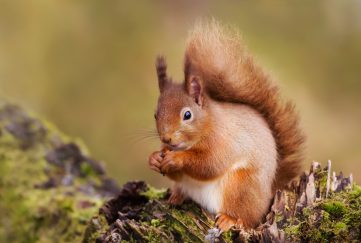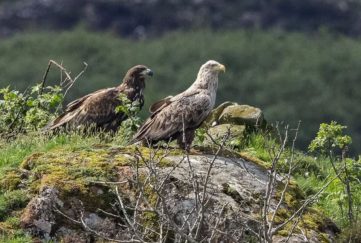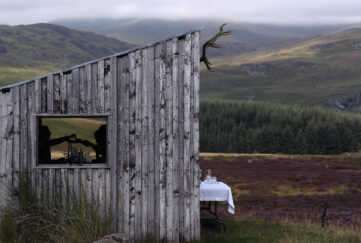Domain Of Our Winter Wren
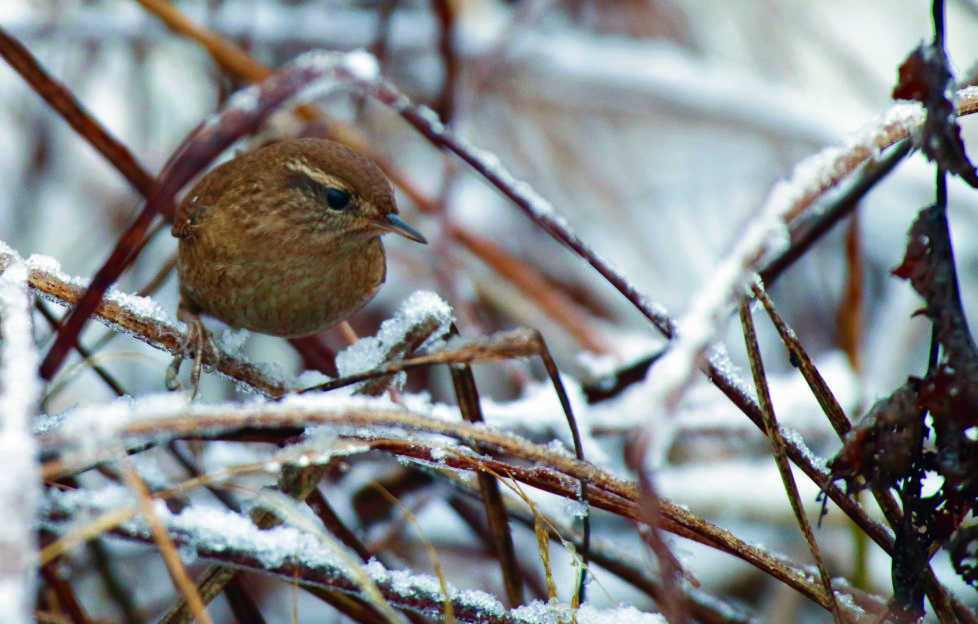
 How can this tiny bird – social yet territorial – presume to look down upon a golden eagle? Jim Crumley investigates
How can this tiny bird – social yet territorial – presume to look down upon a golden eagle? Jim Crumley investigates
Between the pinewood depths of Rothiemurchus and Gleann Einich’s box canyon is one of the Cairngorms’ most affecting mood swings. It is at its most alluring in midwinter.
In a light snowfall, the pines are introverting. The biggest, oldest trees act on the mind of the solitary traveller like a magnet. They seem to step forward from the lesser trees on either side and reel you into their embrace. It helps to realise that some of them will remember the brush of wolf fur 250 or 300 years ago.
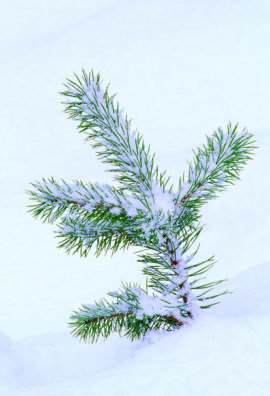
Some grow saplings of birch or rowan in the mulch which accumulates from the years of falling pine needles. Some accommodate the winter roosts of treecreepers where a bird has scooped out a recess in soft, deeply corrugated bark. And some have holes that provide safe haven for winter wrens.
It seems to have fallen into disuse now, but winter wren is our everyday wren’s proper Sunday name. A name that probably derived from its habit of cramming into tiny impromptu winter roosts in improbable numbers. How improbable? Among the most celebrated in ornithology’s limitless capacity for statistical geekery was in Dunkeld, where 43 wrens were found in a single house martin nest.
In ornithology’s defence, improbable numbers are very much the stuff of wren life. Around eight million occupied territories is the estimates British population. (The polygamous nature of wren breeding means population counts are likely to be more accurate if territories are counted instead.) Scotland’s share is somewhere between one and two million territories (it’s an inexact science.) In midwinter, including birds that have migrated from mainland Europe, we will have between five million and eight million wrens.
One consequence of such profusion is that the species can withstand the occasional catastrophe in the harshest of winters. In 1962-63 the population fell by 80 per cent, yet it could still bounce back.
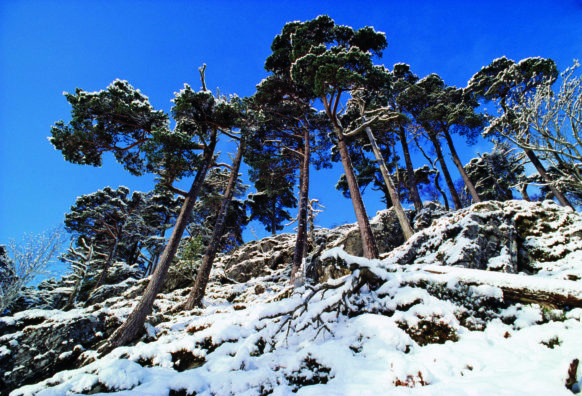
It helps to have that kind of awareness stashed away in the recesses of your mind. This is in the unlikely event that you stumble across a Scots pine just as its overnight guests emerge. I had never seen this before.
There was the black hole, then there was a wren’s head in the entrance. A moment’s pause, then the whole bird emerged, dived into the shroud of a juniper bush and vanished. Nine more wrens appeared one by one in the next half minute, and followed the same routine. All this happened just a few yards from where I leaned against another pine. Because there was so little light, and because what there was had the snow for a diffusing filter, it also happened on the very edge of reliable sight.
So few people ever see it happen, for wrens enter a roost in the dusk and emerge in the dawn. However, it must happen in a million different moments every midwinter morning. It is because of moments like these that the pinewoods have an introverting effect on a solitary walker.
Gleann Einich
Light seeps in as the pines thin out and you begin to become aware of the land beyond the woods. It opens up slowly and the track dips into woodland several times before its convulsive leap into Gleann Einich. Suddenly the snow is inches deep, and the world rears away from the floor of the glen in mountainous strides.
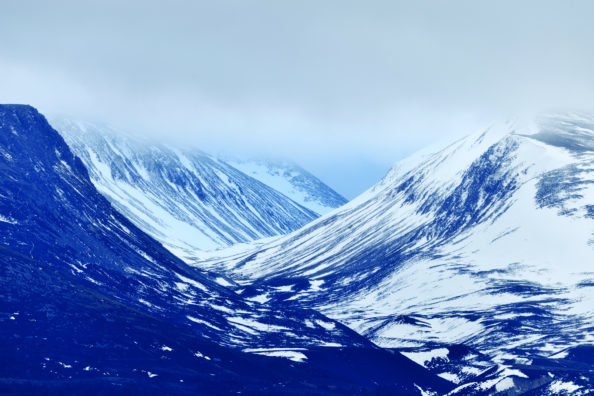
To your left is Braigh Riabhach, and pressed to name the single mountain I would consider the finest in the land, that is the name I would reach for first. Ahead is the headwall of the glen and beyond its skyline the greatest high space in all Scotland, Am Moine Mhor, the Great Moss. To the right are the long, buttress-strewn cliffs of Sgoran Dubh Mor. It is a landscape to stop your breath, and the transition from woodland to mountainland is complete.
An hour or more drifted by, simply walking into a different species of winter, and the only sounds were my own footfall, my own breathing, the mutter of the river where it shouldered through the thin coat of ice which had crept out from the banks in the night, and the occasional sharp-edged crack of a defeated wedge of ice. But deeper into the glen, the ice-strengthened its hold and the snow had piled in over several days and now lay in smooth contours over peat hag and boulder, and the headwall above Loch Einich was a blank sheet of untroubled white.
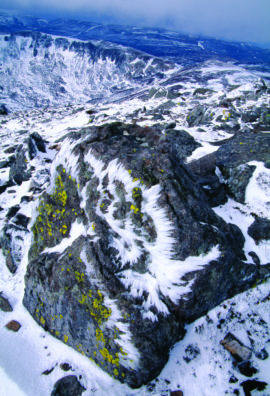
The sun touched the hills at last. I stopped for coffee. A dipper perched on an ice-coated rock and sang. You have to admire a bird that sings in such circumstances. Then it pitched headlong into the current and I shivered on its behalf. Is there a grittier gladiator of the wilds than a dipper? I had no sooner asked myself the question than there was a tiny scuffling inches away from my boots, and something shot into the overhanging lip of the riverbank, where it began foraging for food. It was a wren, truly a winter wren.
We – the wren and I – were three miles out beyond the pines, both of us heading determinedly upstream, the wren foraging apparently with some success in the very jaws of winter. So I plucked the grim winter of ’62-63 from that stoorie recess of my mind and brought it to bear on that scrap of life plucking bugs from the front line of the war between river and ice, and I wondered where it would spend the night. I don’t think it was a tree-rooster making an excursion into the snows, for surely the pinewood offered infinitely richer pickings at this time of year. But the wren is a mountaineer too.
The highest recorded wren nest in the Cairngorms is about 2100 feet. They don’t stay that high outside the nesting season, but birds with territories are not great travellers either. I suspect this one simply retreated no further than the floor of the glen. There are old stone walls and the remains of shielings up at Loch Einich at the head of the glen, and a wren – or many wrens – could find roosts there.
They defend roosts, too, the way they defend a nesting territory, although obviously they let other wrens in, but there is evidence to suggest a bird defending a winter roost improves its chances of prospering at nesting time. I suppose it stops ring-rust setting in.
Golden Eagle
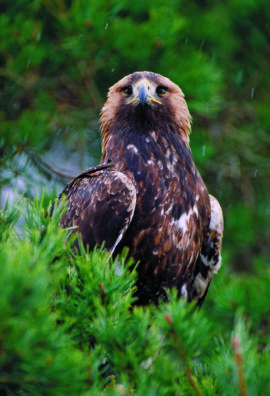
This train of thought was suddenly and spectacularly derailed when I looked up and saw a golden eagle high above Carn Elrig. It flew across the glen on unbeating wings (the wren’s were a restless blur), then launched into nature’s New Year madness of the high-level, high-octane routine of the golden eagle display flight. It would tilt the whole landmass of the Cairngorms into crazily yawing skylines as it rolled and dived, and the rush of air about its wing-folded streamline shape would be a heady roar. The power-climb back up through a thousand feet of spilled air was a worthy sequel, and quite beyond the understanding of mere mortals or wrens.
Such a performance marks that critical point in the wild cycle not just of eagle life but of all nature, the announcement of an end to the old year. Winter is time-limited, it says, and is beginning to fray beyond repair, and the eagle commits in that moment to a sustained expenditure of energy and spectacle that will last more than half the new year, beginning with that stylised sky-dance.
Soon the eagle pair will begin to rebuild the eyrie. In the Cairngorms, where tree nesting is an option, some eyries are simply immense. Seton Gordon detailed one in his 1955 book, The Golden Eagle:
This eyrie, to my personal knowledge, has been in use during a period of forty-five years. It has gradually increased in size until (1954) it is approximately fifteen feet deep. The top of the eyrie is now actually the highest part of the tree. Looking at this eyrie from the ground, the observer sees how one nest after another built on the foundations of the last, and that each eyrie retains its individuality in the whole structure. The weight of the great eyrie must be a burden to the old fir, yet it remains erect and sturdy at the age of perhaps 300 years while others around it have been overthrown by winter gales.
The implication of Seton Gordon’s observation – that the decades of eagle nest-building have helped to sustain and prolong the life of the tree, even as the tree sustains and prolongs eagle life – is one that I find remarkably reassuring. Sometimes the wisdom of nature just blows my mind.
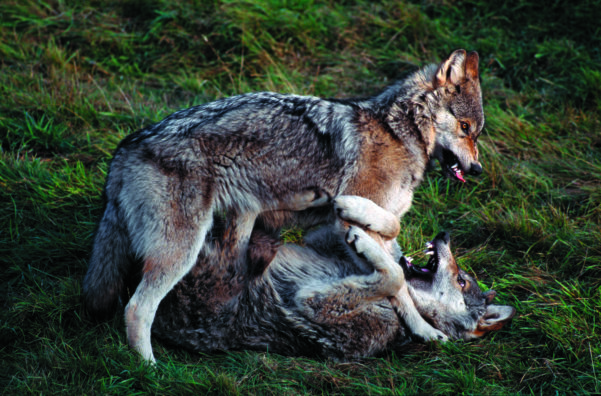
Two thousand feet below the celebrating eagle, the wren hunted on, exploring every square inch for scraps of survival. Up here there is still a lot of winter for a wren to survive. Yet two or three months from now, the wren may well nest higher up the mountain than the eagle, perhaps even a thousand feet higher. They nest in a gully or the gorge of a burn or a scree slope, in a fist-sized dome of grass and moss and whatever else it can find at that height, and it is as inconspicuous as the eagle’s is massive. But as often as not, when they see a golden eagle, they will look down it from far above.
I sometimes think I know this place well. The kind of familiarity I have won with it over many years is a puny reckoning in the wren’s company. How little knowledge I have accumulated compared to the wren’s store. To spend every waking hour scouring the intimacies of the lower half of the mountain, the river banks. Even in pursuit of all that hillside’s crawling and flying minutiae, that is to know the place. But there is so much more to the wren’s knowledge. It must balance its loud voice and its conspicuous way with a rock podium against its vulnerability as prey. It must have an eye for every furrow that might conceal a fox or hawk, and another for the sky.
Think what three or four winters and summers could teach science about the underfoot lives of a Cairngorms hillside. How different is the accumulated knowledge of the wren that spends its life in the green shadow of the pines.
You can read more of Jim Crumley’s Scottish wildlife columns online here, and each month in The Scots Magazine.
Subscribe to The Scots Magazine today for more from Jim Crumley >>



